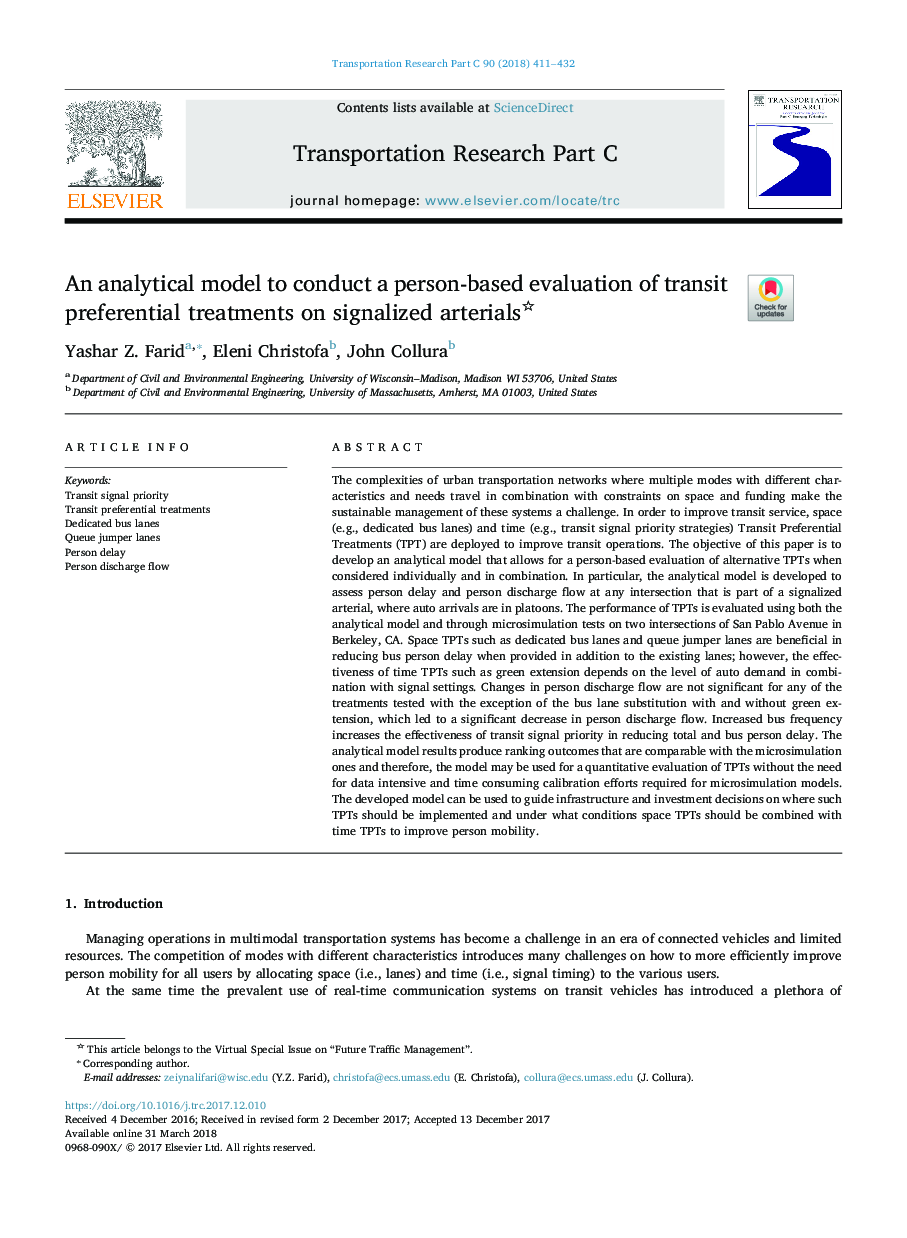| Article ID | Journal | Published Year | Pages | File Type |
|---|---|---|---|---|
| 6936029 | Transportation Research Part C: Emerging Technologies | 2018 | 22 Pages |
Abstract
The complexities of urban transportation networks where multiple modes with different characteristics and needs travel in combination with constraints on space and funding make the sustainable management of these systems a challenge. In order to improve transit service, space (e.g., dedicated bus lanes) and time (e.g., transit signal priority strategies) Transit Preferential Treatments (TPT) are deployed to improve transit operations. The objective of this paper is to develop an analytical model that allows for a person-based evaluation of alternative TPTs when considered individually and in combination. In particular, the analytical model is developed to assess person delay and person discharge flow at any intersection that is part of a signalized arterial, where auto arrivals are in platoons. The performance of TPTs is evaluated using both the analytical model and through microsimulation tests on two intersections of San Pablo Avenue in Berkeley, CA. Space TPTs such as dedicated bus lanes and queue jumper lanes are beneficial in reducing bus person delay when provided in addition to the existing lanes; however, the effectiveness of time TPTs such as green extension depends on the level of auto demand in combination with signal settings. Changes in person discharge flow are not significant for any of the treatments tested with the exception of the bus lane substitution with and without green extension, which led to a significant decrease in person discharge flow. Increased bus frequency increases the effectiveness of transit signal priority in reducing total and bus person delay. The analytical model results produce ranking outcomes that are comparable with the microsimulation ones and therefore, the model may be used for a quantitative evaluation of TPTs without the need for data intensive and time consuming calibration efforts required for microsimulation models. The developed model can be used to guide infrastructure and investment decisions on where such TPTs should be implemented and under what conditions space TPTs should be combined with time TPTs to improve person mobility.
Keywords
Related Topics
Physical Sciences and Engineering
Computer Science
Computer Science Applications
Authors
Yashar Z. Farid, Eleni Christofa, John Collura,
